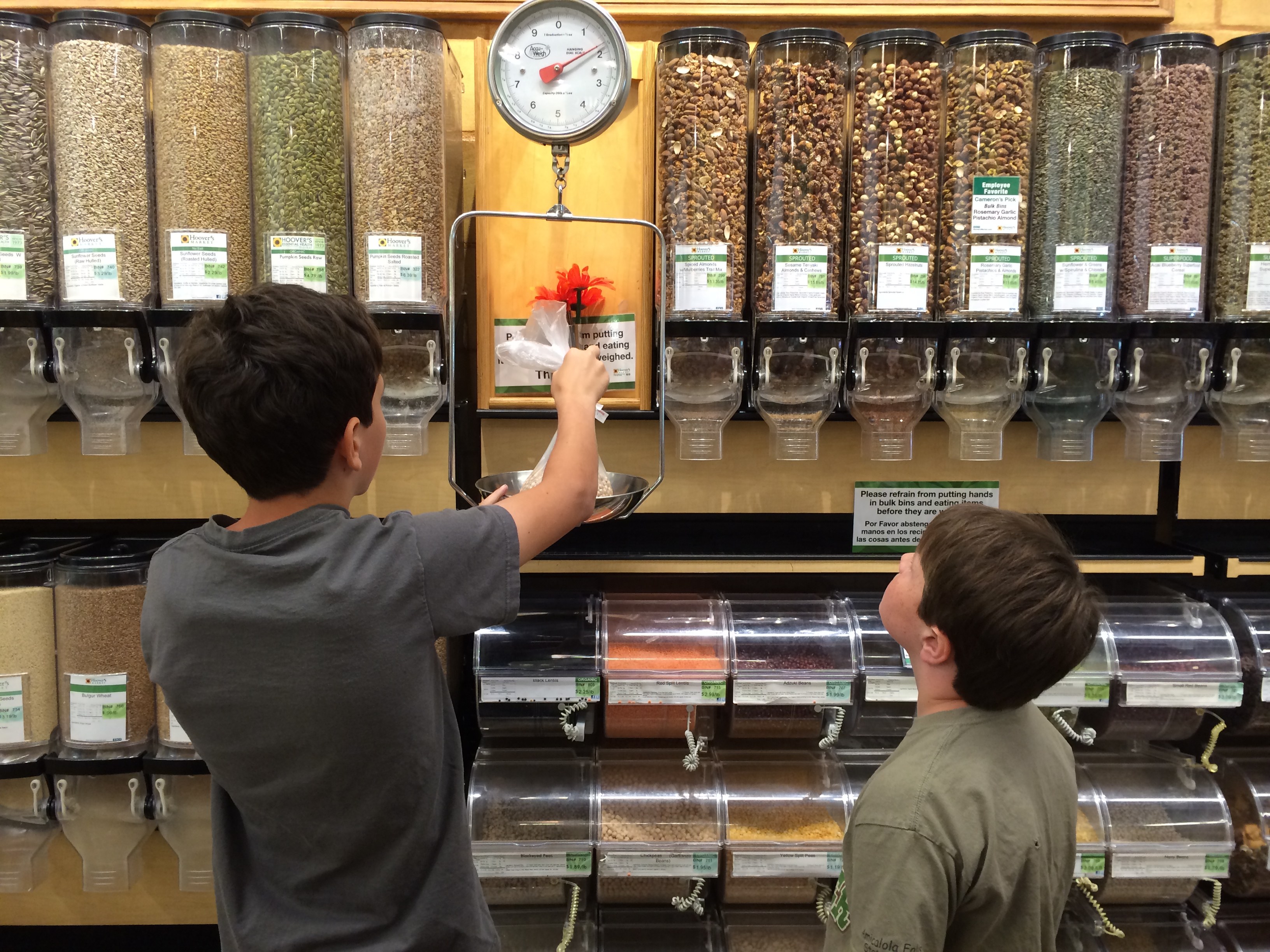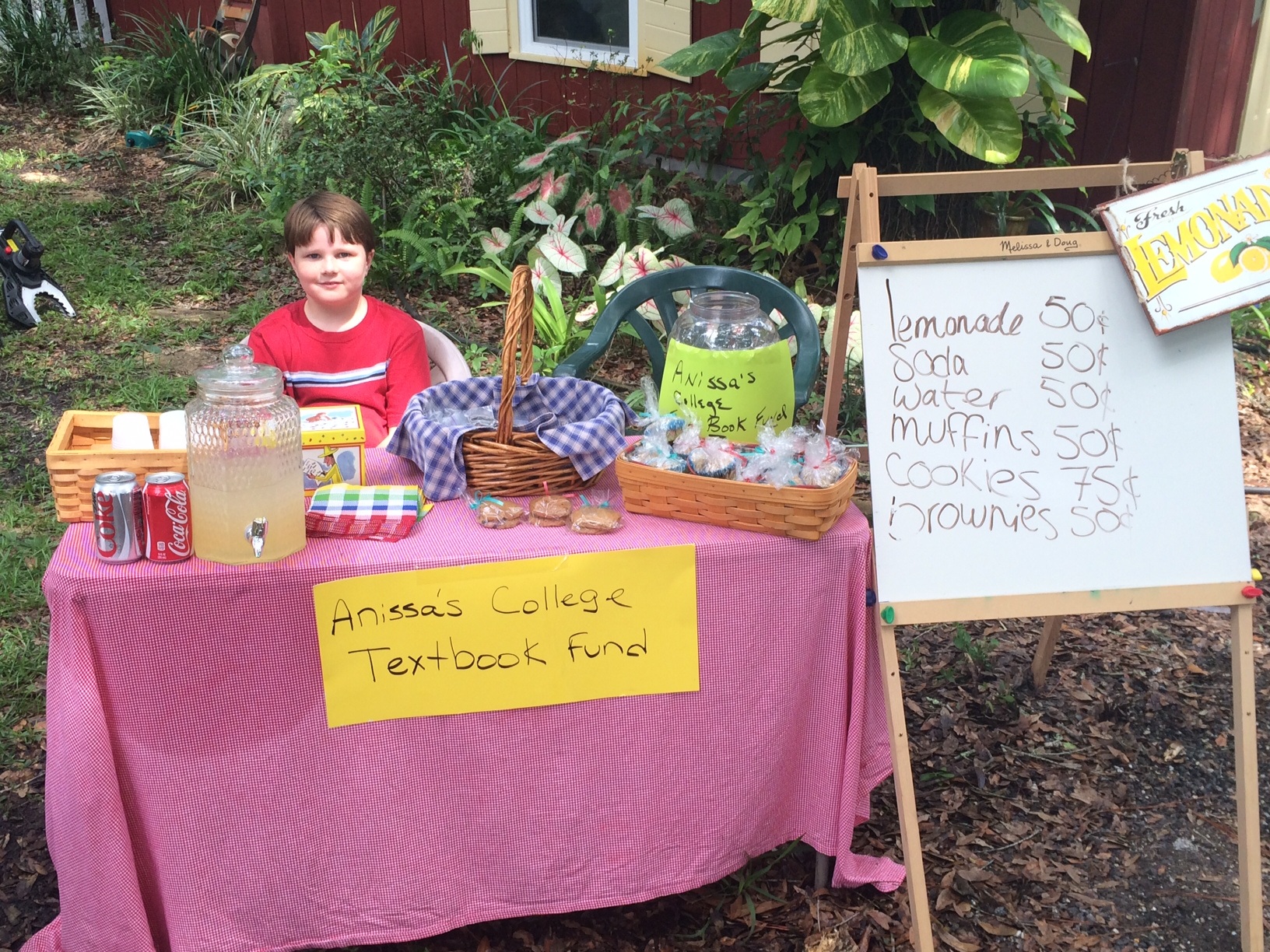
![]() In the last two lessons we have learned how to buy fresh food from a market and how to grow food ourselves. Now let’s combine them with buying other food products from the grocery store to make a family meal.
In the last two lessons we have learned how to buy fresh food from a market and how to grow food ourselves. Now let’s combine them with buying other food products from the grocery store to make a family meal.
Cookbooks:
There are many recipe sites online where you can find a good dinner recipe, but let’s start with a basic cookbook. Cookbooks allow children to look at photographs, turn the page and try to read the ingredients. It is much easier to clean up a spill on a cookbook than an electronic device!
Allow the children to choose a recipe together, or individually. One can choose a breakfast item and the other can choose lunch or dinner. After the recipe is chosen, the children will have to check the pantry for supplies and make a grocery list. If possible, try to incorporate some of your food from the farmer’s market.
Allowing children to experience the wonder of cooking, we must have patience for the mess that will follow. This is all part of the curiosity and science of cooking. All ages can participate in measuring, mixing, arranging and serving.
Math:
Print out the sheet on making a meal in the resources to write out needed ingredients and also to consider the cost of a meal for the family.
Shopping:
The grocery store is a lesson in many subjects every time you visit. Keep younger children engaged by making a scavenger hunt out of boxes from foods they eat. Over time, they will have an assortment of items to watch for as you shop.
Older children can take the list for their meal and locate items. Ask the front desk for a map of the store. Generally, this map with have popular items listed and the row that they can be found. This is an opportunity for children who are not familiar with how grocery stores organize their products to begin taking notice.
The Meal:
Enjoy time in the kitchen together discovering the joy of cooking. Take photographs for your notebook and have them write out their recipe and rate it after they have finished. Do they want to make it again?
![]()

Entrepreneur ideas:
Baking is a popular way to earn extra money or give as gifts to family, friends, and neighbors. During this month did you discover a recipe that others would love? How could you start your own food or plant business? Selling herbs and small vegetable plants are popular. Seeds are your main investment. Yard sales are the easiest way to try out this experiment.
- Choose recipes that are different than the norm.
- Brainstorm who your buyers would be. (neighbors, yard sale, your street, church bazaar, dad’s office)
- Choose a logo or selling taglines at age appropriateness.
- Check with your local market to see what it takes to sell.
- Create a stand to sell your items.
- Will you charge money, give your items away or do a fundraiser for a cause?
Could you be a farmer?
Many families have chosen to farm small plots of land and use their property as u-pick farms or sell to local markets. Farms across America are also multi-generational. This means the farm has been passed down from parents to children.
Other people choose to farm later in life as another source of income. Farming big or small has an impact on your community and the environment. Farms provide food for your community and wildlife too. Cottage industries are small companies or individuals that make a product on a small scale at home. Soap, milk, honey, fruits, and vegetables can all be cottage industries. Regulations on these individuals are usually different than big companies. It allows anyone to try their hand at being an entrepreneur and making a product of their own.
Melanie from Sandhill farms in our video above is a small business owner. She runs this farm mainly by herself. It is her full-time job year round even though her picking season is just two months.
The Experience:
Write about your experience in your notebook. What recipes did you make to sell? Did you decide to do plants? Be sure to include your calculations for expenses and how much your net profit was. Tell us in the comments below what you did or plan to do and send us photos at holly@thegilesfrontier.com so we can add them to our community bulletin board.
Reading List:
Homemade for Sale, Lisa Kivirist
Click to return to ESSENTIAL MEMBERS HOME